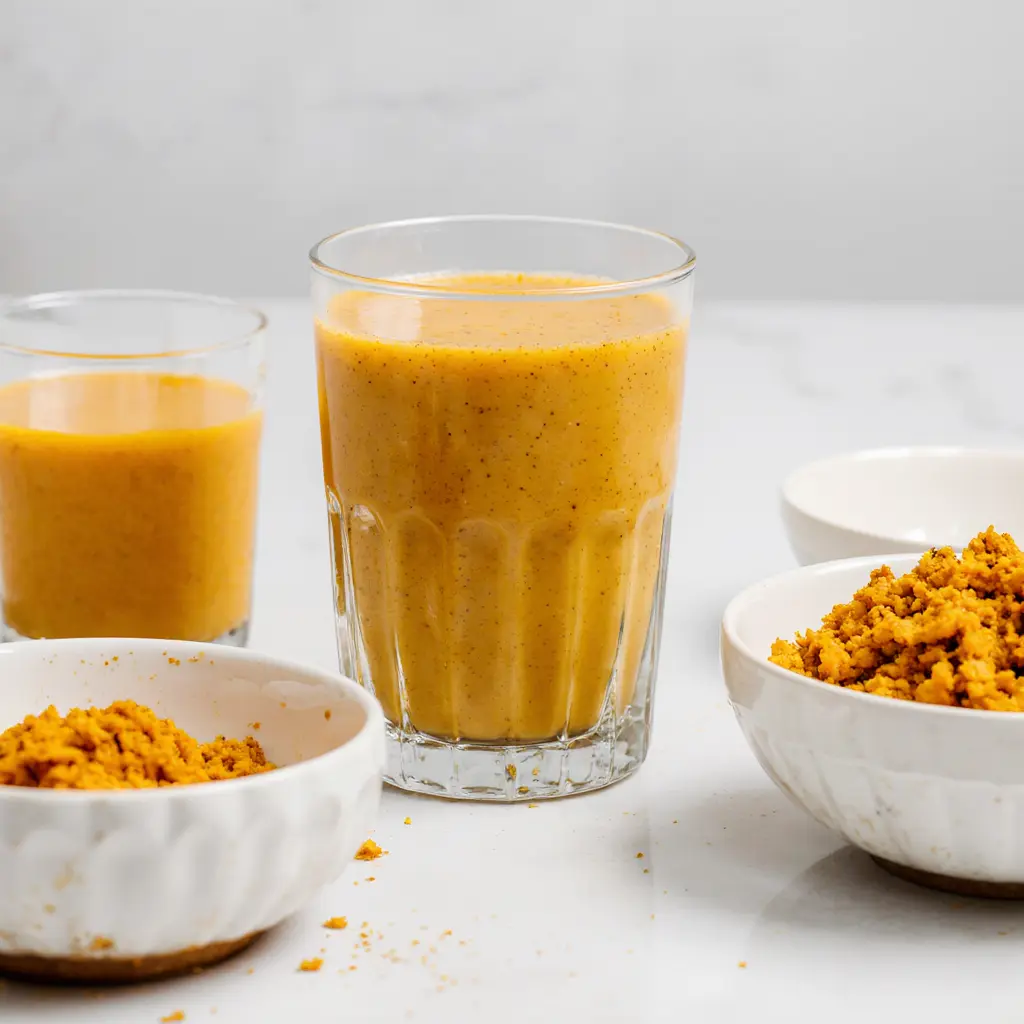Ever wonder if the golden spice sitting in your pantry can actually help with joint pain, puffiness, or even that nagging brain fog? You’re not alone. Turmeric has been used for centuries in traditional cooking and herbal medicine, but more people today are turning to it for one reason: inflammation.
Inflammation is your body’s way of responding to stress or injury—but when it sticks around too long, it can turn into a problem. That’s where turmeric comes in. If you’ve been searching for natural ways to calm inflammation, learning how to use turmeric for inflammation could be a game-changer in your daily routine.
Let’s start with something that confuses a lot of people: the difference between turmeric and curcumin.
Turmeric vs Curcumin
What’s the Difference?
Turmeric is the whole spice—the vibrant orange-yellow root you find fresh or dried. Curcumin is just one compound found inside turmeric, and it’s the part researchers believe is mostly responsible for turmeric’s anti-inflammatory power.
Here’s the breakdown:
- Turmeric is the full root, containing over 100 natural compounds
- Curcumin is one of those compounds—arguably the most active and studied
- Turmeric only contains about 3% curcumin by weight
That means if you’re using turmeric powder in cooking, you’re getting a little curcumin—but also a whole lot of other helpful plant nutrients. Supplements, on the other hand, often extract and concentrate curcumin specifically to increase its effects.
Bioavailability & What Actually Works
Curcumin is powerful—but it’s also tricky. On its own, your body doesn’t absorb it well. That’s why combining it with black pepper (which contains a compound called piperine) can boost absorption by up to 2,000%. Seriously.
Also, curcumin is fat-soluble. That means it absorbs best when taken with healthy fats like olive oil, coconut oil, or avocado.
So the winning combo for your body?
- Turmeric + black pepper + fat
Whether you’re drinking golden milk or cooking turmeric-spiced lentils, this trio helps your body actually use the benefits.
Supplements usually include piperine for this reason, but if you’re using turmeric in the kitchen, a small pinch of pepper and some healthy fat will do the trick just as well.
Dosage & Tips
How Much Turmeric Should You Take Daily?
Turmeric works best in the right amount. The right amount depends on how you’re using it—whether in cooking, tea, or supplement form.
Here’s a general guide to get you started:
- Fresh turmeric root: 1 to 3 grams per day (about ½ inch slice)
- Turmeric powder: ½ to 1 teaspoon daily
- Curcumin supplements: 500 to 2,000 mg per day (with 95% curcuminoids)
If you’re new to turmeric, start small and see how your body reacts. Everyone’s tolerance is different, and sometimes too much at once can cause mild stomach upset.
For supplements, look for products with 95% standardized curcuminoids and piperine (black pepper extract) for better absorption. You’ll usually find this listed on the label.
Safe Use, Interactions, and Best Times to Take It
Turmeric is generally safe for most people—but there are a few things to watch for.
- Take it with food: This improves absorption and reduces the chance of stomach discomfort.
- Evening use: Turmeric lattes or golden milk before bed can support relaxation.
- Avoid if on blood thinners: Turmeric can slightly thin the blood, so talk to your doctor if you’re on medication like warfarin.
- Caution with gallbladder issues: Turmeric may worsen symptoms in people with gallstones or bile duct obstruction.
You don’t need to take turmeric in high doses forever. Think of it as part of a long-term wellness habit—added consistently in small amounts across meals, drinks, or even snacks.
Recipes & Pairings
Easy Ways to Add Turmeric to Your Diet
Using turmeric every day doesn’t have to mean swallowing capsules or reinventing your meals. It’s surprisingly easy to work this golden spice into foods you already enjoy.
Try these simple ideas:
- Golden milk: Warm up your favorite milk (dairy or plant-based) with turmeric, black pepper, cinnamon, and a touch of honey. Perfect before bed.
- Turmeric smoothies: Mix pineapple, banana, ginger, and turmeric for a bright, tropical drink that supports inflammation relief.
- Soups & stews: Stir turmeric into lentil soup, chicken stew, or vegetable broth for a comforting, earthy flavor.
- Turmeric rice: Add ½ teaspoon of turmeric to your rice while it cooks, along with a little black pepper and olive oil.
- Roasted vegetables: Toss cauliflower, carrots, or sweet potatoes with olive oil, turmeric, and cumin before baking.

The key is to pair turmeric with a healthy fat and black pepper—this combo helps your body absorb the curcumin effectively.
Daily Anti-Inflammatory Pairings
Pairing turmeric with other healing foods can boost its impact. Here are a few easy, delicious combos:
- Turmeric + ginger: Add both to tea or smoothies to double up on anti-inflammatory power
- Turmeric + olive oil: Great in salad dressings or drizzle over grain bowls
- Turmeric + cinnamon: Stir into oatmeal, yogurt, or almond butter toast for a warming, blood-sugar-friendly blend
- Turmeric + lemon: Mix into warm water for a simple morning tonic
Try picking just one of these ideas to start. You don’t need to overhaul your diet—just build in a little golden support each day.
FAQ: Using Turmeric for Inflammation
Does turmeric actually reduce inflammation?
Yes. Curcumin, the main compound in turmeric, has been shown to help lower inflammation markers like CRP and cytokines. It’s not a magic fix, but consistent use can make a noticeable difference over time.
How long does it take for turmeric to work?
Most people start to feel benefits in about 4 to 8 weeks of daily use. Keep in mind that food-based approaches take longer than medications—but they’re also gentler on the body.
What’s the best way to absorb turmeric?
Always combine turmeric with black pepper and a source of fat (like olive oil or coconut milk). This helps your body absorb curcumin much more effectively.
Can you take turmeric every day?
Yes, as long as you’re sticking to moderate doses. Whether you use it in meals or take a supplement, daily use is generally safe for most people. If you’re on medication or have a health condition, check with your doctor first.
Conclusion
Turmeric has earned its place as more than just a colorful spice—it’s a gentle, powerful way to support your body’s fight against inflammation. Whether you’re dealing with joint stiffness, digestive issues, or just want to prevent long-term health concerns, this golden root can help.
The key is consistency. Learning how to use turmeric for inflammation doesn’t mean changing everything at once. It means adding a little bit here and there—maybe in your tea, your soup, or your smoothie—and letting those small changes add up over time.
So why not start today? Grab your turmeric, a pinch of black pepper, and give your body the support it deserves—one meal at a time.






1 thought on “How to Use Turmeric for Inflammation”